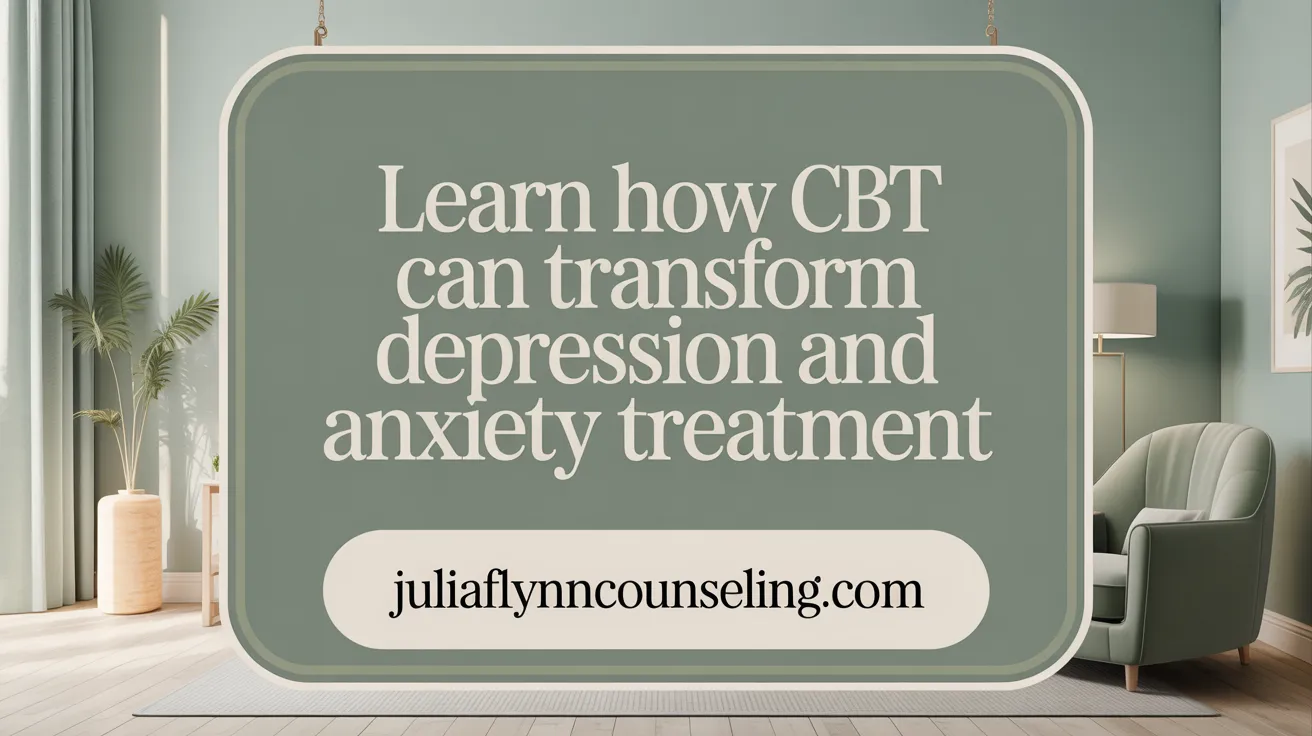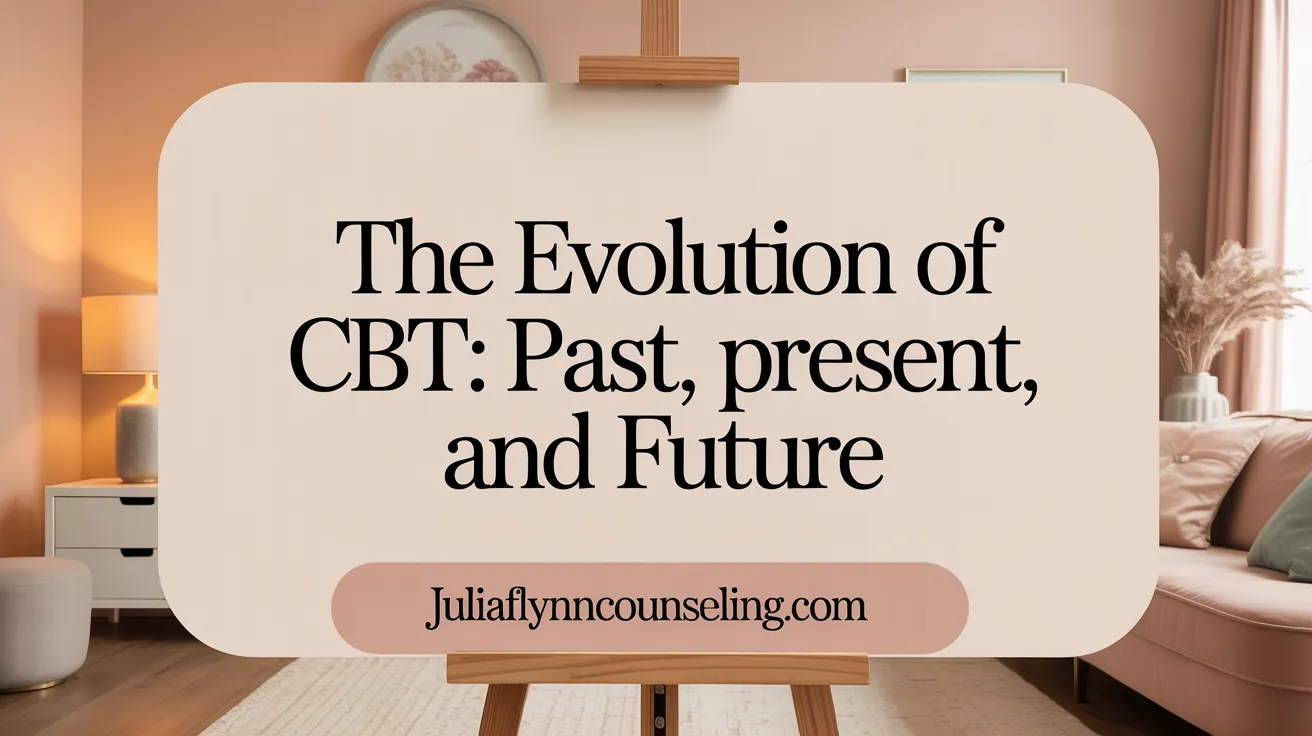Understanding Cognitive Behavioral Therapy
Cognitive Behavioral Therapy, commonly known as CBT, is a widely recognized form of psychotherapy that helps individuals manage emotional difficulties and mental health disorders. Designed to be structured, goal-oriented, and relatively brief, CBT equips people with practical tools to identify and change negative thinking and behavior patterns. This introduction explores the core principles, how CBT works, its benefits, and practical steps for beginners contemplating this therapeutic approach.
What is Cognitive Behavioral Therapy and Its Core Principles?
What is Cognitive Behavioral Therapy (CBT) and what are its core principles?
Cognitive Behavioral Therapy, commonly known as CBT, is a structured and goal-focused form of psychotherapy designed to help individuals understand and change unhelpful thought patterns and behaviors. It is built on the idea that our thoughts, feelings, and actions are closely connected, and that altering negative or distorted thinking can lead to improved emotional states and behaviors.
The core principle of CBT is that by recognizing and challenging faulty thinking—such as catastrophizing or overgeneralizing—people can develop healthier beliefs and reactions. This process often involves techniques like identifying cognitive distortions, facing fears gradually, practicing relaxation and coping skills, and completing homework assignments outside of sessions.
CBT focuses on current issues rather than past causes, making it a practical approach for managing daily stressors and long-term mental health conditions. It sees psychological problems as partly learned patterns—a result of negative core beliefs or maladaptive responses—that can be unlearned and replaced with more positive, adaptive thoughts and behaviors.
Effective for conditions such as depression, anxiety, obsessive-compulsive disorder (OCD), post-traumatic stress disorder (PTSD), phobias, and even physical health issues like chronic pain, CBT empowers individuals through active participation and practical strategies. This approach encourages self-awareness, problem-solving, and resilience, helping people build lasting skills for emotional regulation and mental wellness.
How Does Cognitive Behavioral Therapy Work?
What are the mechanisms of CBT?
Cognitive Behavioral Therapy (CBT) operates through a structured process that targets how thoughts, feelings, and behaviors are interconnected. It focuses on identifying and challenging distorted or unhelpful thoughts—such as catastrophizing or overgeneralization—and replacing them with more realistic, adaptive ones. This rethinking helps change emotional responses and behaviors that stem from negative thinking patterns.
CBT also employs behavioral techniques like problem-solving, relaxation exercises, exposure to feared stimuli, and skill-building activities. These methods help modify learned behaviors that may contribute to emotional distress or mental health issues. Research shows that a core part of CBT’s effectiveness is its ability to promote psychological flexibility and emotion regulation and to foster adaptive responses to stress.
Overall, the mechanisms of CBT include cognitive restructuring, behavioral activation, and the strengthening of the therapeutic alliance, which is crucial for engagement and success. As research advances, additional processes such as emotion regulation strategies and context-based learning are being explored to enhance its effectiveness.
How does CBT identify and modify unhelpful thoughts and behaviors?
During CBT, clients learn to recognize automatic negative thoughts and core beliefs that influence their emotional states and actions. These thoughts can be addressed through techniques like cognitive restructuring, which challenges their validity and helps develop more balanced perspectives.
Behavioral activation is another key method, encouraging clients to increase engagement in positive activities to improve mood and functioning. Techniques like exposure therapy help individuals confront fears gradually, reducing avoidance behaviors.
What techniques are used including cognitive restructuring and behavioral activation?
Cognitive restructuring involves examining and challenging unhelpful thoughts, transforming them into more realistic ones. Behavioral activation involves scheduling activities to combat inertia and sadness. Other useful strategies include relaxation exercises to manage physical symptoms, problem-solving approaches for immediate issues, and exposure techniques for fears or phobias.
Why is the therapeutic alliance and active participation important?
A strong therapeutic relationship, built on trust and collaboration, enhances motivation and openness in therapy. Active participation from clients—such as practicing homework assignments and applying learned techniques—is vital for making lasting changes. Engagement helps ensure that skills learned in sessions are applied in everyday life, leading to better outcomes.
What roles do problem-solving, relaxation, and exposure methods play?
Problem-solving skills help clients manage practical challenges, breaking them into manageable steps. Relaxation techniques, such as deep breathing or progressive muscle relaxation, reduce physical stress responses. Exposure methods gradually confront clients with anxiety-provoking stimuli, decreasing avoidance and fear over time. Collectively, these tools empower individuals to handle stress more effectively and reduce symptoms of anxiety and depression.
Benefits of CBT for Depression and Anxiety

What are the benefits of CBT for mental health issues such as depression and anxiety?
Cognitive Behavioral Therapy (CBT) provides numerous advantages for individuals dealing with depression and anxiety. As a well-researched and evidence-based approach, it has been proven to be effective through many clinical studies and meta-analyses.
CBT helps reduce the severity of symptoms, making it easier for patients to manage their emotional and behavioral difficulties. It also plays a vital role in improving overall quality of life by teaching practical coping skills, such as thought challenging and stress management techniques.
One of the key gains from CBT is its ability to lower the chances of relapse. When patients learn how to identify and modify negative thought patterns, they often maintain their progress long-term, even after therapy ends.
Techniques like cognitive restructuring enable individuals to combat distorted thoughts such as catastrophizing or overgeneralization. Exposure exercises are used to gradually confront and diminish fears about anxiety-provoking situations or stimuli.
Moreover, transdiagnostic protocols within CBT are designed to address common features across various disorders, including depression and different types of anxiety. This flexibility increases accessibility, especially for those with co-occurring conditions, making CBT an adaptable and inclusive treatment choice.
In summary, CBT offers a practical, structured pathway toward symptom reduction, emotional resilience, and improved mental health, backed by strong scientific support.
Common Techniques and Practices in CBT

What techniques and practices are commonly used in Cognitive Behavioral Therapy (CBT)?
CBT employs a variety of practical strategies designed to help individuals understand and change problematic thought and behavior patterns. One foundational technique is cognitive restructuring or reframing. This approach involves identifying negative automatic thoughts and challenging their accuracy, helping clients develop more balanced and realistic perspectives.
Behavioral activation is another essential practice, especially useful for depression. It encourages clients to schedule and engage in activities that are both pleasurable and necessary, counteracting feelings of withdrawal and inactivity that often accompany low mood.
Exposure therapy, and more specifically graded exposure, are used to confront fears gradually. Clients are systematically introduced to feared situations or objects in a controlled way, which helps diminish avoidance behaviors and reduces anxiety over time.
Journaling and thought records are common tools that promote self-awareness. Clients record their thoughts, feelings, and behaviors throughout the week, which aids in recognizing patterns and identifying triggers for distress.
Relaxation techniques and stress management strategies are integrated to help clients cope with physiological symptoms of anxiety and stress. These may include deep breathing, progressive muscle relaxation, or mindfulness exercises.
Lastly, problem-solving strategies are systematically introduced to enable clients to approach everyday challenges effectively. This involves breaking problems down into manageable steps and generating practical solutions.
Overall, these methods work together to help clients recognize and modify unhelpful thinking and behaviors. By doing so, CBT promotes healthier emotional responses and improved daily functioning, making it a highly effective approach for various mental health issues.
Applications and Who Can Benefit from CBT

Who can benefit from Cognitive Behavioral Therapy (CBT) and what are its applications?
CBT is a flexible and effective form of therapy suitable for many different individuals and purposes. It is widely used to treat a variety of mental health conditions. These include depression, anxiety disorders, post-traumatic stress disorder (PTSD), obsessive-compulsive disorder (OCD), eating disorders, bipolar disorder, schizophrenia, and personality disorders.
Beyond mental health, CBT is also helpful for physical health issues that involve psychological components. Patients coping with chronic pain, fibromyalgia, irritable bowel syndrome (IBS), sleep problems like insomnia, and migraines have found relief through CBT techniques focused on managing thoughts and behaviors related to their symptoms.
This therapy is not limited to a specific age group. Children, adolescents, adults, and elderly individuals can all benefit from CBT. It can be tailored for couples and families to improve communication, resolve conflicts, and strengthen relationships.
In addition, CBT is commonly employed for stress management, helping individuals handle everyday pressures, grief, traumatic events, and emotional trauma.
Furthermore, it plays a significant role in behavioral change and addiction treatment. Whether addressing substance abuse, alcohol dependence, or unhealthy habits such as smoking, CBT provides strategies to modify harmful thought patterns and behaviors.
Overall, the reach of CBT is broad. Its evidence-backed methods make it suitable for a diverse population aiming to improve mental and emotional well-being, manage physical health issues, or modify negative behaviors.
| Population/Condition | Application/Use | Additional Details |
|---|---|---|
| Mental health conditions | Depression, anxiety, PTSD, OCD, bipolar, schizophrenia | Proven effective for reducing symptoms and improving functioning |
| Physical health issues | Chronic pain, IBS, migraines, insomnia | Focuses on changing thoughts related to symptoms |
| Children and adolescents | Emotional challenges, behavioral issues | Age-appropriate adaptations available |
| Couples and families | Relationship stress, communication problems | Helps strengthen bonds and resolve conflicts |
| Stress management and trauma | Everyday stress, grief, traumatic experiences | Develops coping skills and resilience |
| Addiction and behavioral problems | Substance abuse, unhealthy habits | Addresses thought patterns fueling behaviors |
CBT’s versatility makes it a valuable resource for many seeking relief, growth, or change across various aspects of their lives.
Preparing for Your First CBT Treatment
How should one prepare for Cognitive Behavioral Therapy (CBT) treatment?
Getting ready for your first session of CBT can help maximize its effectiveness. Start by clearly identifying the issues or symptoms that are affecting your daily life, such as feelings of depression, anxiety, or stress. Understanding what you want to achieve from therapy makes it easier to set meaningful goals.
Next, find a qualified therapist. You can seek recommendations from healthcare providers, friends, or family. It’s important to verify that the therapist is licensed and experienced in CBT, especially in treating your specific concern.
Review your health insurance or healthcare coverage to understand what costs are covered. CBT often involves a limited number of sessions, typically between 5 and 20, so knowing your financial responsibilities beforehand can reduce stress.
Gather relevant information about your thoughts, feelings, and behaviors. Keeping a journal or mood diary can be helpful to track patterns that you might want to discuss. Also, prepare any questions or concerns that you wish to raise with your therapist.
Finally, practice self-care. This includes maintaining good sleep habits, eating healthily, and engaging in activities that reduce stress. Be open-minded about the process and willing to participate actively, including completing homework assignments and practicing techniques outside of sessions. Setting realistic expectations and committing to your goals can greatly enhance your progress in CBT.
Structure of CBT Sessions and What to Expect

Typical number and length of sessions
Brief cognitive behavioral therapy (CBT) usually involves a limited number of sessions, generally between 5 to 20. Each session generally lasts about one hour and is scheduled weekly or bi-weekly.
Initial evaluation and goal-setting
The first session focuses on understanding the client's issues, setting clear treatment goals, and explaining how CBT works. Establishing a good rapport with the therapist helps create a supportive environment.
Homework assignments and active participation
Practicing skills outside of sessions through homework is a vital part of CBT. Tasks such as journaling thoughts, practicing relaxation, or exposure exercises reinforce learning and promote progress.
Working collaboratively with the therapist
CBT is a collaborative process where the client and therapist work together. The client’s honesty, active involvement, and adherence to the treatment plan are essential for success.
Confidentiality and therapy environment
Confidentiality is maintained throughout therapy, with some exceptions related to safety concerns or legal requirements. The environment aims to be safe, private, and encouraging open communication.
Potential emotional discomfort and benefits
Engaging in CBT may sometimes cause initial distress, as confronting problems can be challenging. However, the therapy aims to equip individuals with effective coping strategies, leading to improved mental health and well-being.
Self-Help and Educational Resources for CBT Beginners
Introductory Books and Workbooks
For people new to Cognitive Behavioral Therapy (CBT), beginner-friendly books and workbooks serve as excellent starting points. Titles like "The CBT Toolbox" and "Handbook of Cognitive Behavioral Therapies" offer clear explanations of CBT principles, along with practical exercises. These resources help readers understand how thoughts, feelings, and behaviors are interconnected and provide step-by-step techniques to challenge unhelpful patterns.
Many workbooks include activities such as thought records, behavioral experiments, and problem-solving exercises. These tools encourage active participation, making the learning process more engaging and effective.
Online Courses and Reputable Websites
Online platforms dedicated to mental health often feature courses that introduce CBT basics. Reputable websites, including government health portals and professional organizations, provide tutorials, videos, and downloadable worksheets. They allow learners to explore techniques like decatastrophizing, cognitive restructuring, and stress management.
Some websites also offer guided exercises, such as mood tracking or thought logs, which can be practiced independently or with minimal supervision. These resources are useful for understanding core concepts and developing self-help strategies.
Worksheets and Guided Exercises
Worksheets are invaluable tools for practicing CBT skills outside of therapy sessions. Common worksheets include the dysfunctional thought record, worry scheduling sheets, and exposure hierarchies. These tools support the process of identifying negative automatic thoughts, evaluating evidence, and creating healthier beliefs.
Guided exercises, often available as printable PDFs or digital downloads, lead users through step-by-step activities. They help build a routine of self-monitoring and reinforce learned techniques, making it easier to implement them in daily life.
Videos Demonstrating CBT Techniques
Visual learners benefit from videos that showcase real-life CBT sessions or role-plays. These videos illustrate couch-side techniques like cognitive restructuring, relaxation exercises, and exposure therapies.
For example, shared sessions with clients demonstrate how therapists guide individuals in challenging distorted thoughts or facing fears gradually. Videos with expert commentary also clarify the rationale behind specific interventions, deepening understanding.
Support from Therapists and Workshops
While self-help resources are useful, personalized support from licensed therapists enhances the learning experience. Many therapists offer workshops or group sessions focused on CBT skills, providing real-time feedback and encouragement.
Workshops can be in-person or online, catering to diverse learning preferences and schedules. They foster a supportive environment where individuals can ask questions, share experiences, and practice techniques under supervision.
| Resource Type | Description | Practical Use |
|---|---|---|
| Books | Introductory texts and workbooks | Learning core concepts and practicing exercises |
| Websites | Reputable portals with tutorials and worksheets | Self-guided practice and skill development |
| Worksheets | Thought records, worry schedules, exposure hierarchies | Daily practicing and tracking progress |
| Videos | Demonstrations of CBT sessions and techniques | Visual understanding of therapy interventions |
| Therapists/Workshops | Personalized coaching, group training | Tailored guidance and reinforcement |
These resources collectively support individuals in gaining confidence and competence in applying CBT techniques, whether working independently or alongside professional guidance.
Additional Insights: The Legacy and Evolution of CBT

Who founded CBT and how did it originate?
Cognitive Behavioral Therapy (CBT) was pioneered by psychiatrist Aaron Beck in 1976. He developed it by integrating his insights into how thoughts influence feelings and behaviors, creating a structured approach to mental health treatment.
How does CBT combine different therapeutic approaches?
CBT blends cognitive therapy, which focuses on changing unhelpful thoughts, with behavioral therapy, which aims to modify harmful behaviors. This combination helps patients understand and reframe their thinking patterns while also adopting healthier actions.
How does CBT differ from psychoanalysis?
Unlike psychoanalysis, which explores past experiences and unconscious processes, CBT concentrates on current issues, setting specific goals to address present-day thoughts and behaviors. It is more structured, goal-oriented, and typically shorter in duration.
What is the scientific standing and acceptance of CBT?
CBT is well-supported by evidence from numerous studies and is considered one of the most effective and widely accepted types of psychotherapy worldwide. Its systematic approach makes it suitable for a broad range of psychological and some physical health issues.
How has CBT expanded beyond traditional mental health conditions?
Initially developed to treat depression and anxiety, CBT’s principles have expanded to address issues like chronic pain, sleep problems, and even some medical conditions. Its core methods are now applied across various fields, emphasizing its versatility and relevance in contemporary healthcare.
Embracing Cognitive Behavioral Therapy for Lasting Change
Cognitive Behavioral Therapy stands as a powerful and versatile approach to improving mental health and emotional well-being. Its structured, evidence-based techniques empower individuals to understand and change unhelpful thoughts and behaviors while fostering healthier patterns of coping. Whether managing conditions like depression and anxiety or navigating everyday challenges, CBT offers accessible methods supported by extensive scientific research. Beginners preparing for therapy can benefit greatly from understanding its principles, preparing thoughtfully, and utilizing available resources. Embracing CBT can open pathways to resilience, self-awareness, and lasting positive change.
References
- A Provider's Guide to Brief Cognitive Behavioral Therapy
- Cognitive behavioral therapy
- Online self-help CBT techniques - Every Mind Matters
- Cognitive Behavioral Therapy (CBT): What It Is & Techniques
- In brief: Cognitive behavioral therapy (CBT)
- Cognitive Behavioural Therapy (CBT) Skills Workbook
- Resources from Cognitive Behavior Therapy: Basics and ...
- Introduction to Cognitive Behavioural Therapy (CBT)
- Cognitive Behavioral Therapy (CBT): What It Is & Techniques
- What is Cognitive Behavioral Therapy?
